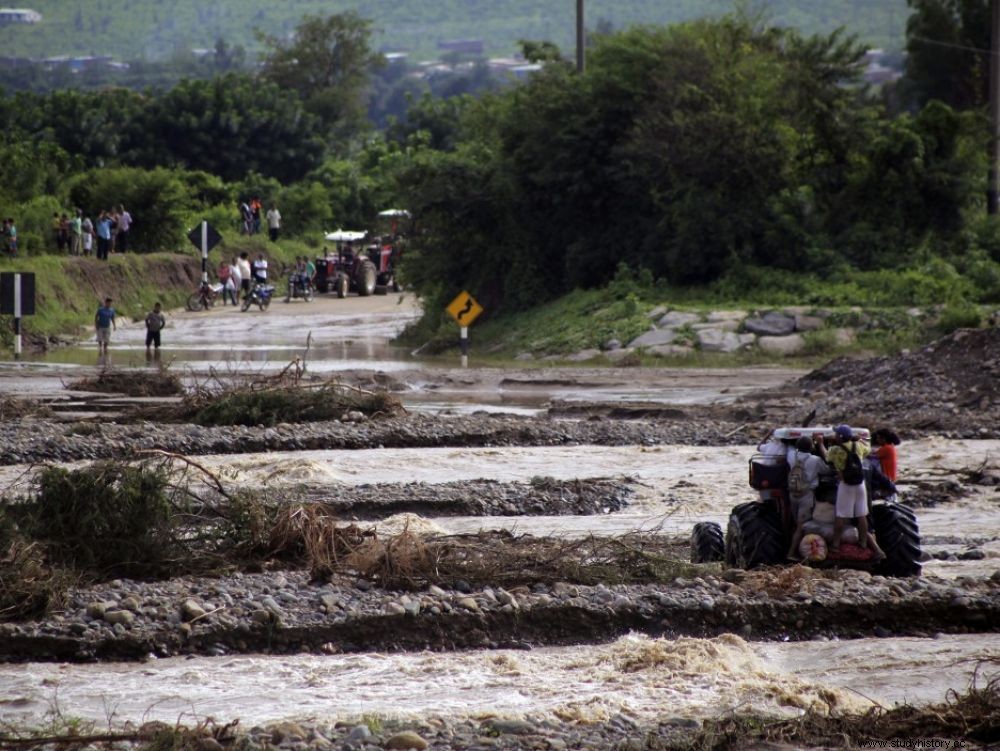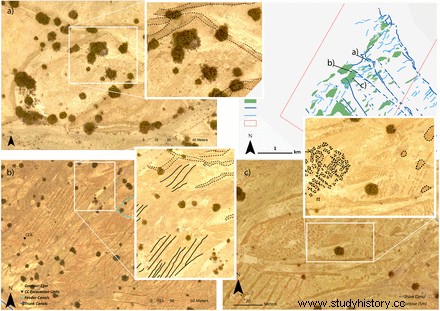The El Niño climatic phenomenon would have been very beneficial to Peruvian farmers of the pre-Hispanic civilization (before the arrival of Christopher Columbus in America) of the Pampa de Mocan, a very arid region in northern Peru. Archaeological research has revealed the existence of sophisticated irrigation systems in this environment.

Pre-Hispanic farmers saw El Niño as an important time for agriculture.
El Niño, a seasonal phenomenon that appears after Christmas, is well known to coastal populations in Peru and Ecuador. This current of warm water pushes the cold water away from the South American coasts. The hot water accumulates and its evaporation will lead to torrential rains and then floods causing extensive damage to both local populations and infrastructure. The analysis of the area allowed the Peruvian and American authors of a study published in the journal PNAS to demonstrate that the irrigation system developed by the inhabitants was particularly resilient to climatic fluctuations. Even better, these events were a sign of good harvests for the ancient farmers.
A flexible irrigation system
Through five years of fieldwork (from 2012 to 2017) in the Pampa de Mocan, researchers have discovered ancient traces of human presence such as dwelling sites and agricultural tools. They also observed many canals, embankments and rock piles used by farmers to divert waterways and irrigate crops.

Aerial images of the canals in the Pampa de Mocan. Caramanica et al. / PNAS (2020)
Unlike early studies that questioned the presence of substantial agriculture in this Peruvian desert, it has indeed been used and improved over the centuries. "From 200 AD, the Mochica people mastered the irrigation of crops" , write the researchers. "Later, the Chimus, having lived from 900 to 1460 A.D., set up hydraulic structures, such as aqueducts, to transport water" .
But to reinforce the solidity of their study, the group of researchers analyzed the pollen contained in the different layers of the earth's subsoil of the Pampa de Mocane over the last 100 years. This technique, called palynology, allowed them to determine the presence of many plants such as reeds and aquatic plants in this desert area after major rainfall events.
El Niño, an event of great flowering
In 2017, the populations of Peru and Ecuador experienced a particularly violent episode, El Niño Costero, killing 101 people in Peru. Of 37 plant species listed by researchers, 80% of them appeared after this tragic event. This suggests that the phenomenon has resulted in a significant flowering period, even in arid areas. This organization allowed pre-Hispanic farmers more flexibility in their cultivation. During periods of calm, they watered the fields with water from the rivers. On the contrary, during climatic fluctuations, rains and floods fed them.
This phenomenon is seen by local governments as a danger to populations and a financial pitfall to repair destroyed infrastructure. Yet, "in light of our results, El Niño should be seen more as part of the usual system, rather than a destabilizer of the region ", say the researchers.
